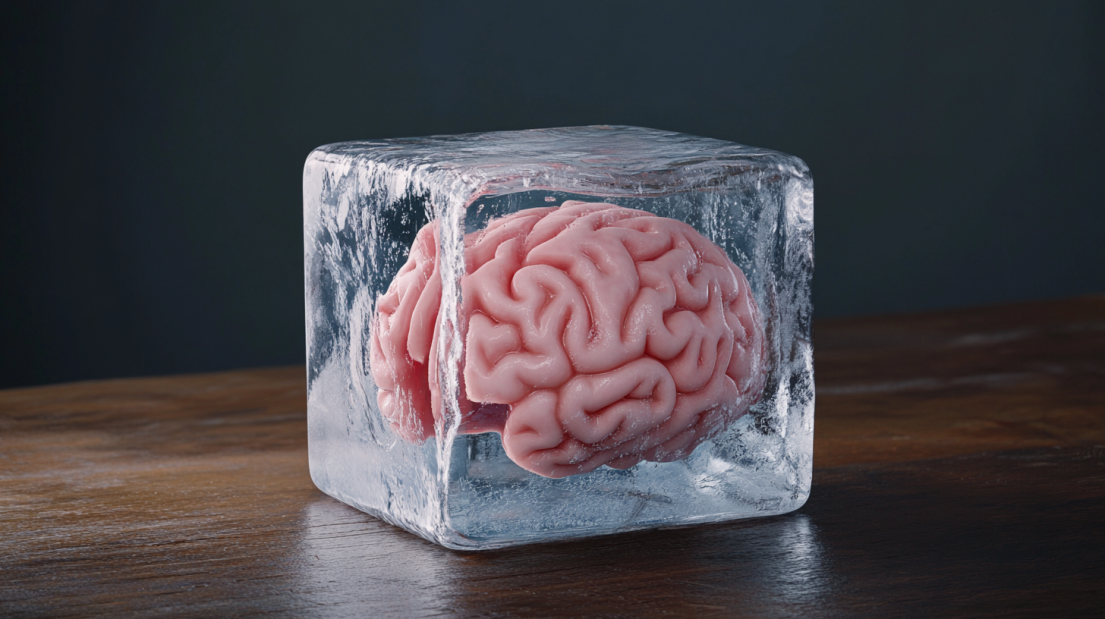A brain freeze occurs when cold substances rapidly cool the roof of your mouth, triggering a sudden headache.
Unlike typical headaches, brain freeze is short-lived and resolves on its own within seconds or minutes.
Despite its fleeting nature, the sensation can be surprisingly intense and painful, often catching people off guard.
The mechanism behind brain freeze involves two main components:
- Temperature Sensitivity of Blood Vessels: The abrupt cooling of the palate (roof of the mouth) causes blood vessels in the area to constrict and then rapidly dilate.
- Activation of the Trigeminal Nerve: This nerve, which transmits sensations from your face to your brain, misinterprets the source of the pain, leading to the characteristic forehead or temple ache.
Key Takeaways
The Physiology Behind the Freeze
Brain freeze is a prime example of how interconnected our body systems are. Here’s a closer look at what happens during a brain freeze:
- Rapid Cooling of the Palate: When something cold touches the roof of your mouth, it creates a sudden temperature drop in the area. This triggers a defense mechanism in the body designed to preserve warmth and protect sensitive tissues according to ScienceDirect.
- Vasoconstriction and Vasodilation: The blood vessels in the palate constrict (vasoconstriction) to minimize heat loss. However, this constriction is quickly followed by dilation (vasodilation) to restore normal blood flow. This rapid cycling creates a localized pressure change that activates pain receptors.
- Trigeminal Nerve Involvement: The trigeminal nerve, which is highly sensitive, picks up these pain signals and sends them to the brain. Due to the phenomenon of referred pain, the brain interprets the pain as coming from the forehead or temples, rather than the mouth.
- Resolution: Once the cold stimulus is removed and the blood vessels stabilize, the pain subsides as quickly as it began.
Could Brain Freeze Be Dangerous?

Short-Term Impact
For the vast majority of people, brain freeze is harmless. It’s a temporary phenomenon that resolves without intervention. The pain, although sharp, is superficial and does not indicate damage to the brain or other vital organs.
Hypothetical Risks
While brain freeze itself is not dangerous, some researchers have explored whether it could exacerbate underlying conditions. For example:
- Migraine Sufferers: NCBI notes that people prone to migraines may experience heightened sensitivity during a brain freeze, potentially triggering a full-blown migraine attack.
- Neurological Disorders: In rare cases, individuals with certain neurological conditions might find the pain from a brain freeze more intense or prolonged, although it is not a direct cause of harm.
Fatal Outcomes?
View this post on Instagram
There is no scientific evidence to suggest that a brain freeze could lead to death.
The physiological changes involved—blood vessel constriction and nerve activation—are localized and do not affect deeper brain structures or cardiovascular functions.
Thus, brain freeze remains an uncomfortable but benign condition.
How to Stop a Brain Freeze
Ever Get Brain Freeze? 🥶
Here’s How To Stop It ❌https://t.co/SjawN6LwC0
— Today FM 💛 (@TodayFM) November 2, 2024
While brain freeze is self-limiting, there are effective ways to shorten its duration or prevent it entirely:
- Warm the Palate: Press your tongue against the roof of your mouth to reintroduce warmth. Alternatively, drinking warm water can help.
- Eat or Drink Slowly: Consuming cold items gradually gives your body more time to adjust, reducing the likelihood of triggering a brain freeze.
- Breathe Through Your Nose: This helps warm the air passing over the palate, stabilizing its temperature.
- Cover Your Mouth While Drinking Cold Beverages: This small adjustment can reduce the speed at which cold substances hit the sensitive area.
Why Does Brain Freeze Feel So Intense?
The pain associated with brain freeze is disproportionately sharp given its cause. This intensity arises because:
- The trigeminal nerve is one of the most sensitive nerves in the body.
- The brain is particularly sensitive to changes in temperature and blood flow, even if the changes are localized.
- Referred pain creates a mismatch between the source of the discomfort and where the pain is perceived, adding to the sensation’s confusion and severity.
Interestingly, this rapid, intense response highlights how efficiently the body communicates and reacts to sudden environmental changes.
Myths and Misconceptions

Several myths surround brain freeze, many of which have been debunked by scientific research:
- Myth: Brain freeze can cause brain damage.
- Reality: Brain freeze does not affect brain tissue directly; the pain is confined to the surface nerves and blood vessels.
- Myth: Brain freeze can trigger heart attacks.
- Reality: There is no evidence linking brain freeze to cardiovascular events. The changes in blood flow are localized and superficial.
- Myth: Brain freeze only happens with ice cream.
- Reality: Any cold substance, including drinks or frozen treats, can trigger a brain freeze.
Broader Implications of Brain Freeze
Beyond its role as a quirky discomfort, brain freeze illustrates the complexity and efficiency of the human body. It showcases:
- The Body’s Adaptability: The ability to respond so rapidly to temperature changes is a testament to our body’s intricate defense mechanisms.
- Pain Pathways: Brain freeze highlights the phenomenon of referred pain, which is critical to understanding how and why pain is perceived in certain ways.
Similarly, issues like wisdom teeth can lead to referred pain, where discomfort in the mouth radiates to areas such as the ear, further demonstrating the body’s interconnected pain pathways.
